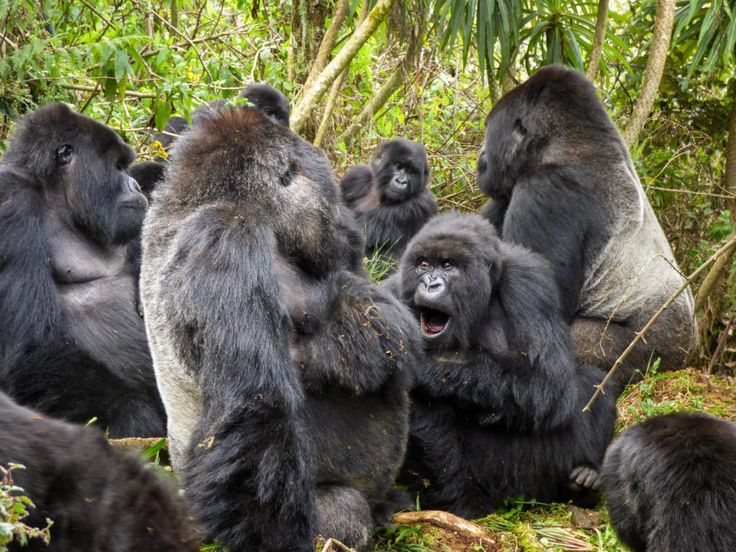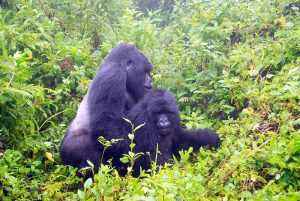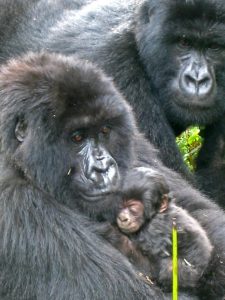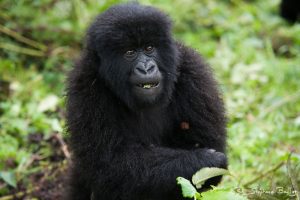Travel Advice for Gorilla Trekking in DR Congo
Travel Advice for Gorilla Trekking in DR Congo. Gorilla trekking in the Democratic Republic of Congo (DRC) is a once-in-a-lifetime experience that allows travelers to see the endangered mountain gorillas in their natural habitat. DRC’s Virunga National Park and Kahuzi-Biega National Park are two of the few places in the world where you can encounter these magnificent creatures up close. While the experience is rewarding, it requires careful planning due to the region’s unique challenges.
Here’s essential travel advice for gorilla trekking in DR Congo to ensure a safe, enjoyable, and unforgettable adventure:
1. Choosing Between Virunga and Kahuzi-Biega
The DRC offers two primary locations for gorilla trekking:
- Virunga National Park: Located in the eastern part of the DRC, Virunga is home to the endangered mountain gorillas. It is the most popular choice for gorilla trekking and is part of the greater Virunga Conservation Area, which also spans Rwanda and Uganda.
- Kahuzi-Biega National Park: Situated near Bukavu, this park is famous for eastern lowland gorillas, a subspecies that is larger and more robust than mountain gorillas. Fewer visitors come here, making it a more secluded and intimate experience.
2. Getting a Gorilla Trekking Permit
Gorilla trekking permits are required to visit the gorillas. These permits are limited to protect the gorillas and their habitats, so it’s important to book in advance.
- Cost of the Permit: In Virunga National Park, the permit costs $450 USD for foreign visitors (significantly cheaper than Rwanda or Uganda). In Kahuzi-Biega National Park, the permit costs $400 USD.
- How to Book: You can purchase permits through the Virunga National Park website, authorized tour operators, or the Institut Congolais pour la Conservation de la Nature (ICCN) for Kahuzi-Biega.
3. Best Time to Go
The best time to go gorilla trekking in the DRC is during the dry seasons:
- June to September
- December to February
During these months, the weather is more predictable, and the forest trails are less muddy, making trekking easier.
4. Travel and Safety Considerations
Travel in the DRC, particularly in the eastern regions where gorilla trekking takes place, requires careful planning due to security concerns. Follow these important safety tips:
- Check Travel Advisories: Before traveling, always check your government’s travel advisories for up-to-date information on safety and security. The eastern DRC can be volatile due to political instability and conflict in some areas.
- Travel with a Reputable Tour Operator: Choose a trusted and experienced tour operator that specializes in DRC gorilla trekking. They will handle logistics, safety measures, and provide knowledgeable guides.
- Virunga Security: Virunga National Park has its own security force and strict protocols in place to protect tourists and wildlife. Always follow the park rangers’ instructions during your visit.
5. Health and Vaccination Requirements
Visiting the DRC requires certain health precautions:
- Yellow Fever Vaccine: Proof of yellow fever vaccination is required to enter the DRC.
- Malaria Prevention: The DRC is a malaria zone, so bring anti-malarial medication and use insect repellent with DEET.
- COVID-19: Check for any COVID-19 requirements such as vaccination or negative test results before your trip.
Additionally, trekking can be physically demanding, so ensure you’re in good health and physically prepared for the hike.
6. What to Pack for Gorilla Trekking
Gorilla trekking involves hiking through dense rainforest, so it’s important to pack appropriately for the terrain and weather:
- Hiking Boots: Sturdy, waterproof boots with good ankle support are essential for trekking through uneven, muddy terrain.
- Long-Sleeved Shirt and Pants: Wear lightweight, moisture-wicking clothing that covers your arms and legs to protect against insects and nettles.
- Rain Gear: The weather can be unpredictable, even during the dry season. A lightweight, waterproof jacket and pants will keep you dry.
- Garden Gloves: These help protect your hands when grabbing vegetation or holding onto trees while trekking.
- Insect Repellent: Use repellent to ward off mosquitoes and other insects.
- Camera: Bring a camera with a good zoom lens (flash photography is prohibited) to capture photos of the gorillas from a distance.
- Water and Snacks: Trekking can take several hours, so carry water and some high-energy snacks to stay hydrated and fueled.
7. Fitness and Trekking Experience
Gorilla trekking can range from moderate to strenuous, depending on the location of the gorillas and the terrain. You may hike for several hours through dense forest, muddy paths, and steep inclines, so it’s important to be in good physical condition.
- Training: If possible, prepare for the trek by walking or hiking regularly in the weeks leading up to your trip to build stamina.
- Acclimatization: If you’re trekking in Virunga, the altitude can affect some visitors, so take time to acclimate if necessary.
8. Following Gorilla Trekking Etiquette
Once you find the gorillas, it’s important to follow these rules and etiquette to ensure both your safety and the protection of the gorillas:
- Keep a Distance: Stay at least 7 meters (21 feet) away from the gorillas at all times to avoid transmitting diseases.
- No Flash Photography: Flash can startle the gorillas, so ensure your camera settings are adjusted for low light.
- Stay Quiet and Calm: Avoid sudden movements or loud noises. The guides will instruct you on how to behave, especially if the gorillas come closer to the group.
- Follow Guide Instructions: Always listen to your guide or ranger for safety instructions and advice on interacting with the gorillas.
9. Combining Gorilla Trekking with Other Activities
The DRC offers more than just gorilla trekking. You can combine your trip with other adventures:
- Nyiragongo Volcano Hike: One of the world’s most active volcanoes, Mount Nyiragongo is near Virunga and offers a challenging trek to its summit, where you can see a spectacular lava lake.
- Visit Lake Kivu: A relaxing retreat near both gorilla trekking parks, Lake Kivu is ideal for unwinding, swimming, or taking a boat ride after your trek.
10. Supporting Conservation Efforts
Gorilla trekking permits and tourism are vital for the conservation of mountain and lowland gorillas. By visiting Virunga or Kahuzi-Biega National Parks, you’re directly contributing to the protection of these critically endangered species and the preservation of their natural habitats.
To further support conservation:
- Book with Responsible Operators: Choose tour operators that prioritize sustainable tourism and work closely with local communities.
- Donate: Consider donating to organizations working to protect the gorillas, such as the Virunga Foundation or Gorilla Doctors, which provide medical care to wild gorillas.
Final Thoughts
Gorilla trekking in the DRC is a remarkable and life-changing experience, offering a rare opportunity to see these majestic creatures in the wild. While the region requires more logistical planning and precaution due to its challenging conditions, the experience is well worth the effort. By preparing properly, following safety guidelines, and respecting the environment, you can have a safe and unforgettable adventure with the gorillas in one of Africa’s most beautiful and untouched landscapes.




